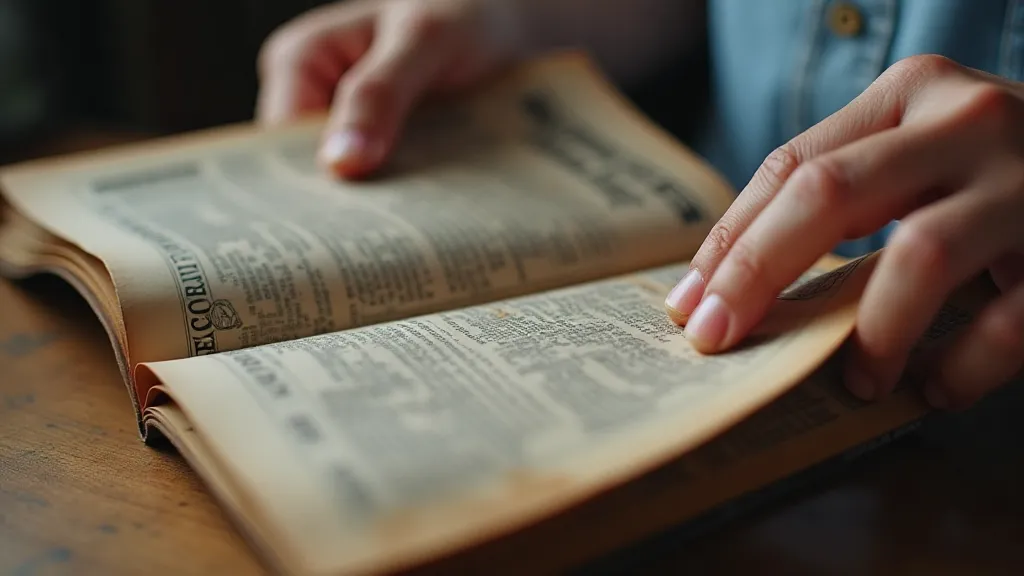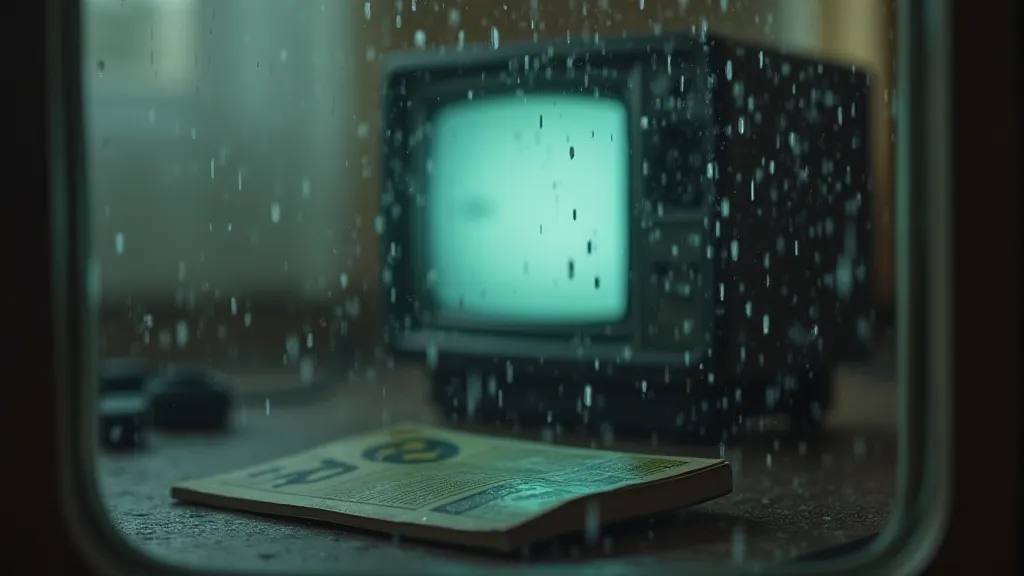The Price of Nostalgia: A Collector’s Perspective on the Fluctuating Market for Vintage TV Guides
There's a peculiar warmth that comes with holding a vintage TV Guide. It’s more than just the feel of aged paper; it’s the tangible weight of memory, a portal to a simpler time. For those of us drawn to collecting these relics, it’s a journey that extends far beyond mere acquisition. It's a quest to preserve a slice of American cultural history, a period when television was king, and the weekly TV Guide was the kingdom's most important decree. But that journey is also inextricably linked to the fluctuating market – a fascinating and sometimes perplexing dance between nostalgia, rarity, and the laws of supply and demand.
My own fascination began unexpectedly. Growing up, my grandfather kept a stack of TV Guides from the 1960s. I remember being mesmerized by the vivid color covers, the carefully curated program listings, and the ads that offered a window into a bygone era of consumerism. While my friends were obsessed with video games, I'd pore over these magazines, imagining myself transported to the black-and-white world of The Twilight Zone or the vibrant hues of The Andy Griffith Show. That initial spark of curiosity has grown into a lifelong passion, and a deep understanding of the collector's market that surrounds these iconic publications.
The Foundation: Condition, Rarity, and the Passage of Time
Understanding the value of a vintage TV Guide boils down to a few key factors. Condition is paramount. A pristine copy, graded by a professional service like Collectible Paper Grade (CPG), will always command a significantly higher price than a copy marred by water damage, tears, or excessive wear. These graded copies offer a level of objectivity that’s often lacking in the hobby. Rarity is the next major driver. Certain issues are simply more scarce than others – perhaps due to printing errors, regional distribution, or simply because fewer copies survived the ravages of time. And, of course, the very passage of time affects value. As decades pass, the remaining copies diminish, further elevating the price for those seeking to own a piece of history. The deliberate curation of television schedules and the impact they had on viewing habits is something that modern audiences might not fully appreciate. How much control did producers and networks really have, and how did The Illusion of Choice: How TV Guide Curated the Television Landscape, impact the weekly programming experience?
 The Golden Era: 1950s and 1960s Television Listings
The 1950s and 1960s are widely considered the golden era for vintage TV Guide collecting. This was the period when television was rapidly gaining popularity and becoming a central part of American family life. The programming was distinctive – a blend of live broadcasts, family-friendly sitcoms, and groundbreaking dramas. Shows like I Love Lucy, Bonanza, and The Dick Van Dyke Show became cultural touchstones, and their listings in the TV Guide are highly sought after. Specific issues featuring iconic covers—a young Elizabeth Taylor, a smiling Lucille Ball—are particularly valuable. The power these publications held over shaping audience expectations and creating a sense of shared experience is often underestimated today. Think about the feeling of anticipation for a new episode and how consistently the TV Guide reinforced that excitement. It's easy to get lost in the listings, reconstructing forgotten television programs based on collector accounts—a fascinating aspect of this hobby, detailed further in Lost in the Listings: Reconstructing Forgotten Television Programs Through Collector Accounts.
Beyond the covers, the content itself holds a certain appeal. Unlike today’s fragmented media landscape, television programming in the 1950s and 1960s was tightly controlled and highly predictable. The TV Guide provided a comforting sense of order, a roadmap through the week's entertainment. Looking back, it’s fascinating to see how carefully producers and networks managed their programming, and how the TV Guide played a vital role in shaping public perception.
Early Television History and the Evolution of the Guide
The early years of TV Guide (from its debut in 1953) tell a story of innovation and adaptation. Initially, it wasn't as polished as the later editions. Early issues had less comprehensive listings, different formatting, and occasionally contained errors. These early editions, while less aesthetically pleasing, are increasingly appreciated by collectors for their historical significance. They offer a glimpse into the nascent stages of television broadcasting and the evolving role of the TV Guide itself. During this period, television slowly moved from a novelty to an integral part of daily life, leaving behind a trail of fleeting moments and obscure shows. Many of these have been all but lost to time, but through the dedication of collectors, we can sometimes piece together the story of what was on the air—a process beautifully described in The Static of Obsolescence: Why Fleeting Television Became a Collector’s Treasure.
The subscription history also impacts value. Back when TV Guides were delivered directly to homes, cancellations and returns created a surplus of copies that sometimes found their way into less-than-ideal condition. These "second-run" copies are generally less valuable than those that made it into the hands of eager readers. Moreover, understanding the technical aspects of early television broadcasting and how those limitations influenced the design and content of the guide can enrich the collecting experience.
The 1970s and Beyond: A Shift in the Market
While the 1950s and 1960s remain the most desirable eras for collectors, the 1970s and beyond are not without their appeal. Certain issues from this period, particularly those featuring popular shows or iconic covers, can still command respectable prices. However, the market has generally softened compared to the "golden era" due to increased availability and shifting collector preferences. As color television became more prevalent, and advertising techniques evolved, the appearance and style of the TV Guide underwent noticeable changes. Those shifts, and the way they impacted the aesthetic appeal of the publications, add another layer of complexity to the collector's market.
Craftsmanship and the Art of Preservation
Handling these vintage publications requires a certain level of care. The paper is often brittle and delicate, and improper handling can cause irreparable damage. Storage is crucial – keeping the guides away from direct sunlight, humidity, and extreme temperatures is essential for preserving their condition. Examining the evolution of the magazine's design, including the use of color and advertising, provides a fascinating look at the changing landscape of consumer culture – a subject explored in depth in Chromatic Ghosts: The Evolution of Color and Advertising in 1960s TV Guides.
The Golden Era: 1950s and 1960s Television Listings
The 1950s and 1960s are widely considered the golden era for vintage TV Guide collecting. This was the period when television was rapidly gaining popularity and becoming a central part of American family life. The programming was distinctive – a blend of live broadcasts, family-friendly sitcoms, and groundbreaking dramas. Shows like I Love Lucy, Bonanza, and The Dick Van Dyke Show became cultural touchstones, and their listings in the TV Guide are highly sought after. Specific issues featuring iconic covers—a young Elizabeth Taylor, a smiling Lucille Ball—are particularly valuable. The power these publications held over shaping audience expectations and creating a sense of shared experience is often underestimated today. Think about the feeling of anticipation for a new episode and how consistently the TV Guide reinforced that excitement. It's easy to get lost in the listings, reconstructing forgotten television programs based on collector accounts—a fascinating aspect of this hobby, detailed further in Lost in the Listings: Reconstructing Forgotten Television Programs Through Collector Accounts.
Beyond the covers, the content itself holds a certain appeal. Unlike today’s fragmented media landscape, television programming in the 1950s and 1960s was tightly controlled and highly predictable. The TV Guide provided a comforting sense of order, a roadmap through the week's entertainment. Looking back, it’s fascinating to see how carefully producers and networks managed their programming, and how the TV Guide played a vital role in shaping public perception.
Early Television History and the Evolution of the Guide
The early years of TV Guide (from its debut in 1953) tell a story of innovation and adaptation. Initially, it wasn't as polished as the later editions. Early issues had less comprehensive listings, different formatting, and occasionally contained errors. These early editions, while less aesthetically pleasing, are increasingly appreciated by collectors for their historical significance. They offer a glimpse into the nascent stages of television broadcasting and the evolving role of the TV Guide itself. During this period, television slowly moved from a novelty to an integral part of daily life, leaving behind a trail of fleeting moments and obscure shows. Many of these have been all but lost to time, but through the dedication of collectors, we can sometimes piece together the story of what was on the air—a process beautifully described in The Static of Obsolescence: Why Fleeting Television Became a Collector’s Treasure.
The subscription history also impacts value. Back when TV Guides were delivered directly to homes, cancellations and returns created a surplus of copies that sometimes found their way into less-than-ideal condition. These "second-run" copies are generally less valuable than those that made it into the hands of eager readers. Moreover, understanding the technical aspects of early television broadcasting and how those limitations influenced the design and content of the guide can enrich the collecting experience.
The 1970s and Beyond: A Shift in the Market
While the 1950s and 1960s remain the most desirable eras for collectors, the 1970s and beyond are not without their appeal. Certain issues from this period, particularly those featuring popular shows or iconic covers, can still command respectable prices. However, the market has generally softened compared to the "golden era" due to increased availability and shifting collector preferences. As color television became more prevalent, and advertising techniques evolved, the appearance and style of the TV Guide underwent noticeable changes. Those shifts, and the way they impacted the aesthetic appeal of the publications, add another layer of complexity to the collector's market.
Craftsmanship and the Art of Preservation
Handling these vintage publications requires a certain level of care. The paper is often brittle and delicate, and improper handling can cause irreparable damage. Storage is crucial – keeping the guides away from direct sunlight, humidity, and extreme temperatures is essential for preserving their condition. Examining the evolution of the magazine's design, including the use of color and advertising, provides a fascinating look at the changing landscape of consumer culture – a subject explored in depth in Chromatic Ghosts: The Evolution of Color and Advertising in 1960s TV Guides.
 Restoration, however, is a tricky subject. While some minor cleaning or repair might be acceptable, extensive restoration can significantly diminish the value of a vintage TV Guide. The integrity of the original publication is paramount. The goal should be preservation, not alteration.
The Fluctuating Market: Trends and Predictions
Like any collectibles market, the vintage TV Guide market is subject to fluctuations. Economic conditions, collector demographics, and even popular culture trends can influence prices. Recently, there's been a renewed interest in mid-century modern design and vintage Americana, which has provided a boost to the market. However, online auction sites and the ease of access to information have also led to increased competition and a more discerning buyer base. Predicting the future is challenging, but several factors suggest continued interest. The rise in popularity of vintage aesthetics and the desire to connect with tangible pieces of the past will likely sustain demand for these publications. Moreover, the inherent nostalgia evoked by these guides – the longing for a simpler time, for shared cultural experiences – is a powerful force.
Predicting the future of the market is difficult, but it's likely that the rarest and best-preserved copies from the 1950s and 1960s will continue to appreciate in value. The nostalgia for a simpler time, the appreciation for craftsmanship, and the desire to own a tangible piece of history will continue to drive demand for these iconic publications.
Restoration, however, is a tricky subject. While some minor cleaning or repair might be acceptable, extensive restoration can significantly diminish the value of a vintage TV Guide. The integrity of the original publication is paramount. The goal should be preservation, not alteration.
The Fluctuating Market: Trends and Predictions
Like any collectibles market, the vintage TV Guide market is subject to fluctuations. Economic conditions, collector demographics, and even popular culture trends can influence prices. Recently, there's been a renewed interest in mid-century modern design and vintage Americana, which has provided a boost to the market. However, online auction sites and the ease of access to information have also led to increased competition and a more discerning buyer base. Predicting the future is challenging, but several factors suggest continued interest. The rise in popularity of vintage aesthetics and the desire to connect with tangible pieces of the past will likely sustain demand for these publications. Moreover, the inherent nostalgia evoked by these guides – the longing for a simpler time, for shared cultural experiences – is a powerful force.
Predicting the future of the market is difficult, but it's likely that the rarest and best-preserved copies from the 1950s and 1960s will continue to appreciate in value. The nostalgia for a simpler time, the appreciation for craftsmanship, and the desire to own a tangible piece of history will continue to drive demand for these iconic publications.
 For me, collecting vintage TV Guides isn't just about acquiring valuable items; it's about connecting with the past, preserving a piece of American culture, and sharing that passion with others. It’s a hobby that rewards patience, knowledge, and a deep appreciation for the enduring power of nostalgia. And it’s a journey I suspect I’ll be enjoying for many years to come. The dedication required to catalog and preserve these treasures, often battling the ravages of time and the challenges of finding accurate information about obscure programs, truly reflects a passion for preserving cultural history.
For me, collecting vintage TV Guides isn't just about acquiring valuable items; it's about connecting with the past, preserving a piece of American culture, and sharing that passion with others. It’s a hobby that rewards patience, knowledge, and a deep appreciation for the enduring power of nostalgia. And it’s a journey I suspect I’ll be enjoying for many years to come. The dedication required to catalog and preserve these treasures, often battling the ravages of time and the challenges of finding accurate information about obscure programs, truly reflects a passion for preserving cultural history.








